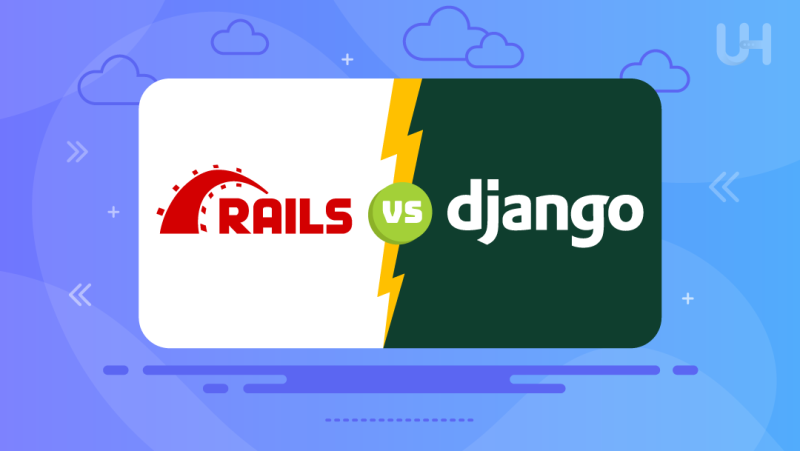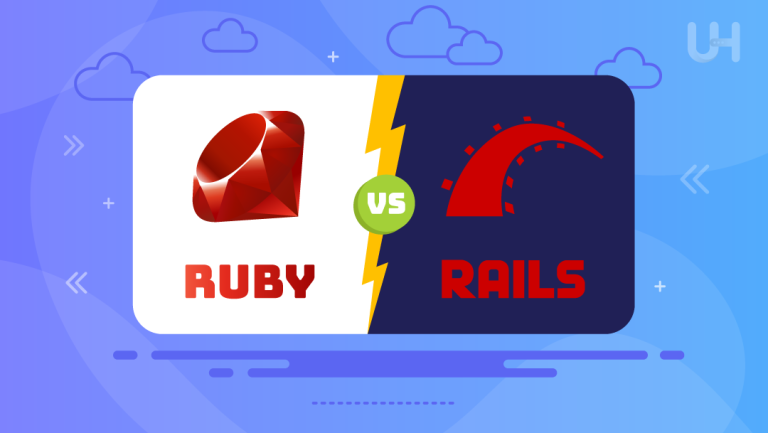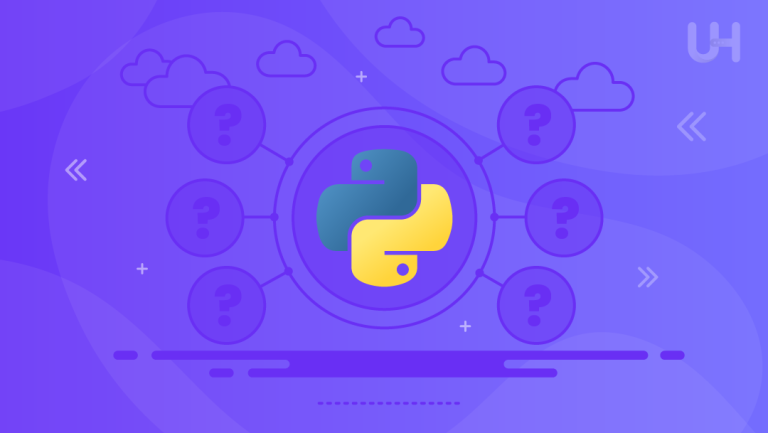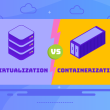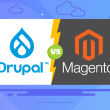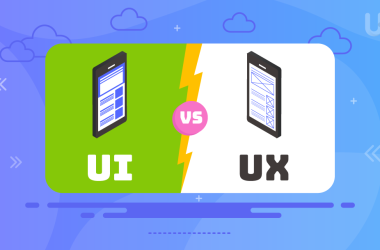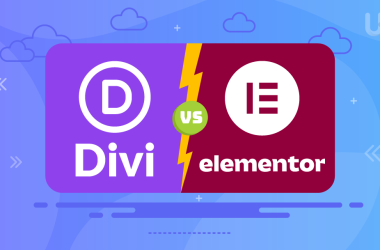Choosing the proper backend framework for your project is one of the most critical decisions in web development. Among many options, Ruby on Rails vs Django stand out as two of the most popular and powerful frameworks. Both are open-source, mature and have a rich set of tools to accelerate web application development. However, they have distinct philosophies and features that make each suited for specific use cases.
In this article, we will compare Ruby on Rails and Django in terms of performance, scalability, community support, ease of use, and many other concerns to help decide where the project fits best.
What Is Ruby on Rails?
Ruby on Rails, more colloquially known as Rails, is an open-source server-side Web application framework written in the programming language Ruby. It follows the convention-over-configuration principle and tries to ease development by using a determined approach, keeping all applications standard, and making the development process faster.
Key Features of Ruby on Rails
- Convention Over Configuration: this convention reduces the number of decisions to be made by a developer.
- Built-in Testing: Ruby on Rails provides strong testing tools to ensure high code quality.
- Active Record ORM: It makes integrating the database easier using Ruby objects.
- Rich Ecosystem of Gems: Thousands of gems are libraries for extending capabilities.
Advantages of Ruby on Rails
- Rails Rapid Development: Rails is designed to accelerate web development by providing various web development tools, libraries, and an organized workflow that expedites coding.
- Convention over Configuration: This principle minimizes the need for explicit configurations, allowing developers to make straightforward decisions based on established conventions.
- Scaffolding: Rails includes code generators for scaffolding, which create the foundational code for an application’s basic functionality. This enables developers to build applications more quickly.
- Integrated Testing: Rails comes with integrated testing support right out of the box. This feature simplifies testing the entire application through its Application Programming Interface (API) or user interface (UI).
- Large Ecosystem: The Rails community has developed thousands of gems (libraries) that enhance the framework with additional features, such as authentication, file uploading, and background processing.
Disadvantages of Ruby on Rails
- Learning Curve: Although Rails accelerates development, its convention-over-configuration approach can be challenging for newcomers to grasp.
- Performance: It is slower than languages with more efficient frameworks like Java or C++.
- Complexity in Large Applications: As applications expand in size and complexity, maintaining them in Rails can become more difficult, especially without solid development practices.
- Server Overhead: Evidence indicates that Rails applications typically require more server resources to run smoothly to frameworks based on faster low-level languages.
What Is Django?
Django is a powerful backend framework built on Python. It is designed with a “batteries-included” philosophy, which means it offers a comprehensive set of built-in tools that streamline the process of developing scalable and secure web applications. One of Django’s most remarkable features is its strong emphasis on security, ensuring developers adhere to best practices in web development.
Key Features of Django include:
- Batteries Included: Django comes equipped with essential built-in functionalities such as authentication systems, administrative panels, and an Object-Relational Mapping (ORM) layer, which greatly simplifies database interactions.
- DRY Principle: The framework promotes the “Don’t Repeat Yourself” principle, encouraging developers to write reusable and maintainable code, thereby enhancing productivity.
- Secure by Default: Django is designed to protect against data security and data privacy vulnerabilities, including SQL injection and Cross-Site Scripting (XSS), making it a reliable choice for developing safe applications.
- Highly Scalable: This framework is well-suited to many projects, from small websites to extensive enterprise-level applications, allowing for significant growth without sacrificing performance.
Overall, Django provides a robust foundation for building secure and efficient web applications, making it a popular choice among developers.
Advantages of Django
- Efficiency and Scalability: Django is favored by tech startups for its speed in building and scaling projects.
- Documentation: The well-structured documentation offers valuable guidance for improving code performance, understanding security features, and creating forms.
- Security: Django includes built-in user authentication and protection against HTTPS, Clickjacking, XSS, CSRF, and SQL injection, requiring no extra setup.
- Versatility: This framework can handle a range of applications, from content management systems to social networks, and is adaptable for complex data analysis or machine learning tasks.
- Community Assistance: With over sixteen years of growth, the vibrant Django community provides extensive support across various applications.
Disadvantages of Django
- Not for simple projects: Django is a high-level framework better for complex features, making it less ideal for quick, simple tasks.
- Slow performance: While Django allows rapid development, websites may slow down due to the limited resources accessed, not because of Python or Django itself.
- Steep learning curve: Django’s size necessitates a good understanding of its structure before starting, though extensive documentation and community support help mitigate this.
- Lack of conventions: Django lacks specific coding conventions, which can frustrate some developers and hinder progress.
Comparison Table: Django vs Ruby on Rails
| Features | Ruby on Rails | Django |
| Purpose | Web Applications | Web applications, Desktop applications |
| Operating Systems | Cross-platform | Cross-platform |
| Language | Ruby | Python |
| Database | Microsoft SQL Server, MongoDB, MySQL, PostgreSQL, Drizzle, Oracle, Redis, Cassandra, Couch DB, Maria DB, Memcache DB, NoSQL DB, Edition, etc. | IBM DB2, Apache, COuchbase, Cassandra, PostgreSQL, MySQL, MongoDB, Redis, etc |
| Memory Recommended | 1GB | 128MB |
| Tag | MVC (Model-View-Controller) | MVT (Model-View-Template) |
| Startup Time | 1s | 2s |
| Difficulty Level | Advanced | Medium |
Performance Comparison: Ruby on Rails vs Django
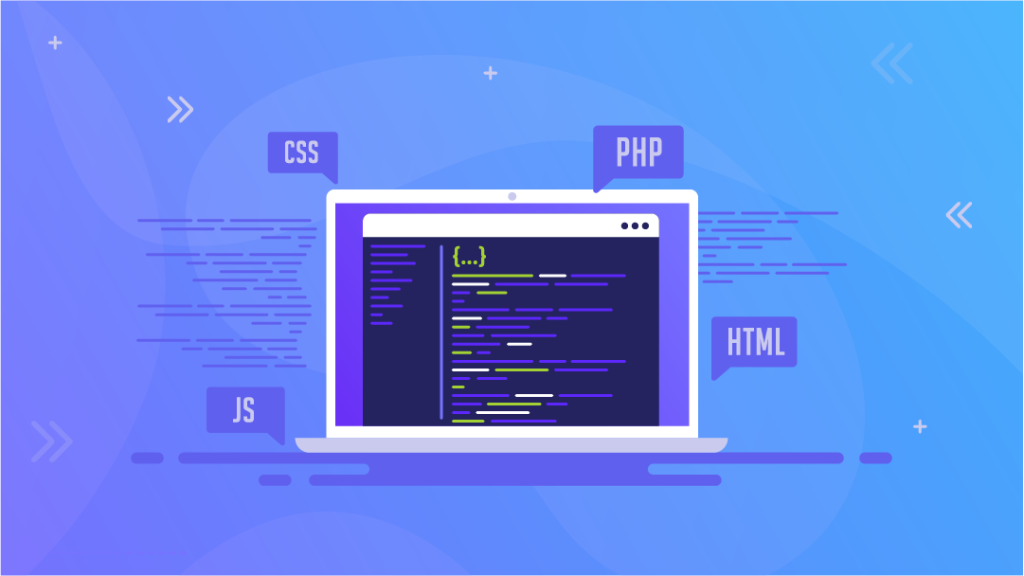
Both frameworks can build high-performance applications, but their speed depends on the specific use case and the underlying infrastructure. Ruby on Rails efficiently manages complex workflows due to its optimized libraries and tools. However, Ruby’s runtime performance is somewhat slower than that of Python, which may affect high-traffic applications.
On the other hand, Python’s efficient request handling and Django’s lightweight architecture make it quicker for basic tasks. Additionally, Django’s ORM is capable of easily managing complex database queries.
Elevate Your Django Projects with UltaHost!
Power your Django applications with UltaHost’s Django Hosting, which offers blazing-fast performance, robust security, and seamless scalability. It is perfect for developers seeking optimized environments for Django frameworks. Get started today and transform your backend experience!
Scalability: Which Framework Handles Growth Better?
Ruby on Rails has a strong history of supporting scalable applications, exemplified by platforms like GitHub and Shopify. Its modular design and compatibility with various cloud-based VPS hosting solutions.
Django is also well-known for its scalability, with successful implementations at companies like Instagram and Pinterest. Python’s robust ecosystem further enhances its ability to manage rapid growth, making it an excellent choice for businesses anticipating a surge in traffic.
Ease of Use and Developer Experience
Ruby on Rails emphasizes simplicity and convention, making it very beginner-friendly. Developers value the “Rails way” of doing things, which helps reduce decision fatigue.
Django, with its thorough documentation and the readability of Python, is an excellent option for both beginners and experienced developers. Additionally, its admin interface is particularly beneficial for managing backend operations.
Ruby on Rails vs Django: Community and Ecosystem
Ruby on Rails boasts a passionate, committed community and a wealth of resources, tutorials, and gems to address common issues. However, in recent years, its user base has grown more slowly than that of Django.
Django, on the other hand, has a vibrant and expanding community driven by the rising popularity of Python. Its ecosystem offers libraries for various applications, including data analysis, machine learning, and web scraping, which makes it a versatile choice for developers.
Security Features: Django or Ruby on Rails?
Ruby on Rails offers built-in protection against SQL injection, cross-site scripting (XSS), and cross-site request forgery (CSRF). However, developers must remain vigilant and adhere to best practices to ensure security against DDoS attacks.
Django strongly focuses on security, making it a preferred choice in industries such as finance and healthcare. Its features prevent SQL injection and protect against CSRF by default.
Ruby on Rails vs Django: Cost of Development
Both Ruby on Rails and Django are free and open-source frameworks, offering developers a strong foundation for building web applications. However, the overall cost associated with hosting and maintaining an application can differ. Ruby on Rails applications might find hosting services advantageous, allowing for flexible scaling as the application grows.
Conversely, Django applications frequently utilize Python hosting solutions tailored specifically for Python, which can enhance performance and efficiency.
When to Use Ruby on Rails vs Django
Ruby on Rails is particularly suites for startups and the development of Minimum Viable Products (MVPs) due to its ability to facilitate rapid development and deployment. It is also an excellent option for building eCommerce platforms similar to Shopify.
On the other hand, Django is a great choice for projects that demand high scalability and robust security features. It is especially advantageous for data-driven marketing, applications, and analytics platforms, making it a preferred option in industries such as healthcare and finance.
Conclusion
Choosing between Ruby on Rails vs Django comes down to your project’s specific requirements. Rails excels in rapid development and ease of use, making it a great choice for startups and MVPs. Django’s focus on scalability and security is ideal for data-intensive and enterprise-grade applications.
When deciding between Ruby on Rails vs Django for web development, pairing them with reliable web hosting solutions like UltaHost is crucial to ensure optimal performance and scalability. UltaHost offers speed, security, and seamless deployment for your projects.
FAQ
What are the main differences between Ruby on Rails and Django?
Rails focuses on convention-over-configuration, while Django emphasizes the DRY principle and security.
Which framework is better for startups, Ruby on Rails or Django?
Startups often prefer Ruby on Railsups due to its rapid development capabilities.
Is Django faster than Ruby on Rails?
Django can be slightly faster for lightweight tasks, but overall performance depends on the project requirements.
Can I use Ruby on Rails for e-commerce platforms?
Yes, Rails is highly suitable for e-commerce platforms like Shopify.
Which framework has better scalability, Django or Ruby on Rails?
Both are scalable, but Python’s ecosystem enhances Django’s scalability.
Is Python hosting better for Django applications?
Yes, Python hosting is optimized for Django applications.
Can I switch from Ruby on Rails to Django later?
While switching frameworks is possible, it requires significant code rewriting and effort.





